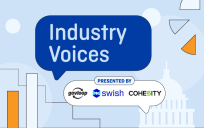In our first open government series we talked about how intermediate goals (which reside between the temptation to go straight to “cool tools” and the overall vision of “government as a platform”), are critical to focus on when developing an open government strategy for an Agency that will ultimately help them achieve their mission better. This series drives at another challenge that practitioners face in creating robust open government strategies: who to engage in the leadership of the effort and how to get those people talking the same language. We do this by:
- Laying out the motivations and approaches that individual offices would likely take in developing their pieces of an Open Gov strategy;
- Suggesting some bottom line recommendations for those offices the equip them to be the best possible partner; and
- Synthesizing those approaches into a common language that can help all the right people work together from the beginning.
The goal of this series is to help make the case for convening as step one an interdisciplinary leadership team to develop an Agency’s Open Government strategy. Often offices don’t communicate because they believe their processes don’t complement one another. However, this series will demonstrate that all the essential partners aren’t so different after all, and though they may have different terms and general approaches, they share many of the same concerns, requirements and motivations. We will highlight the following offices and their drivers in the coming weeks:
(1) Program Offices (Posted 10/6/09)
(2) Office of the Chief Information Officer (OCIO) (Posted 10/8/09)
(3) Office of General Counsel (OGC) (Posted 10/15/09)
(4) Office of the Chief Financial Officer (OCFO) (Posted 10/21/09)
(5) Chief Technology Officer (CTO) (Posted 10/23/09)
(6) Policy Development Office (Posted 10/27/09)
(7) Office of Public Affairs (OPA) (Posted 11/3/09)
(8) Human Resources (HR) (Posted 11/10/09)
Please let us know any feedback and whether or not you think any other offices/approaches should be integrated as well. This series will hopefully help practitioners get to “step one” in their open government effort: convening the right people at the table to support the development of a robust and implementable strategy.




Wow. That TechCrunch article you referenced by Tim O’Reilly was the best piece on Gov 2.0 that I’ve seen yet. Thanks! I have to quote the last two paragraphs here because it so accurately describes how I see this challenge:
[ In this regard, there’s a CNN story from last April that I like to tell: a road into a state park in Kauai was washed out, and the state government said it didn’t have the money to fix it. The park would be closed. Understanding the impact on the local economy, a group of businesses chipped in, organized a group of volunteers, and fixed the road themselves. I called this DIY on a civic scale. Scott Heiferman corrected me: “It’s DIO: Not ‘Do it Yourself’ but ‘Do it Ourselves.’” Imagine if the state government were to reimagine itself not as a vending machine but an organizing engine for civic action. Might DIO help us tackle other problems that bedevil us? Can we imagine a new compact between government and the public, in which government puts in place mechanisms for services that are delivered not by government, but by private citizens? In other words, can government become a platform?
We have an enormous opportunity right now to make a difference. There’s a receptivity to new ideas that we haven’t seen in a generation. Government at all levels has put out the call for help. It’s up to the tech community to respond, with our ideas, with our voices, with our creativity, and with our code. ]
The General Counsel and CIO posts are live, so please check those out and let us know any thoughts you have. At the very least, open gov strategists and practitioners should make sure to ask all these questions before moving forward with a program or tool.
Enjoy!
Can this be scaled to the County and State level? Can the community partners be integrated with government in the DIO mind set? I sure hope so.
Gerry–
This can be scaled at all levels, understanding that the CIO, CFO and CTO may wear the same hat at a smaller entity. Regardless, they will have all the same questions. The legal questions will be slightly different however since the laws that constrain and empower the federal government (PRA, FACA, etc…) are not the same as those for the County and State level. I hope this helps you!
Just posted thoughts on the perspective the CTO and policy development shops will bring to the “open gov” leadership table.
Only two more left in this series to lay out (in detail) who should be at the leadership table and what they care about.
Great stuff
All of the postings are now live. These major partners should all be at the leadership table: policy, legal, CIO, OPA, Program Managers, CTO, HR and CFO. Hopefully the questions that we propose they are concerned with will help offices understand WHY those folks should be at the table. Enjoy!
Jenn – You might want to add “privacy officer” to the list!
I understand that we’re talking about an agency team here…but wondering about the role of a Citizen Stakeholder Group that is at the table from the outset. Part of “Government 2.0” is recognizing that we no longer need to work on our own to provide public value…and the need to make sure that our outcomes are generated in tandem with the people that will benefit from public services.
Great points– both of you. Thanks!
John, a lot of the time the privacy folks sit in the general counsel shop–so we tried to capture that role by having the lawyers at the table. But you are right that more specific roles such as those that influence privacy, records management, security, and infrastructure must all be considered; however, oftentimes those functions all live in larger offices. (i.e. privacy in OGC, records management, security and infrastructure in CIO, etc…) We just tried to capture the large offices in this series.
Andrew–great point. The PM’s in this analysis are supposed to understand and represent the interest of the stakeholder. Since OPDs, OGCs, HR shops, CIOs, etc tend to be further away from the mission areas, and thus the stakeholder/citizen, the PM is crucial to engage since they know their audience the best. Bringing in a citizen stakeholder group–formally–could also trigger FACA (the federal advisory committee act) which governs how the federal government receives and acts on consensus opinions from the public. Digital collaboration, through blogs, is less formal, so it helps feds to avoid FACA, but open up public meetings and decision sessions and a can of worms could be opened.
Hopefully we at least tangentially addressed your additions in the schema. Thanks for the great comments!
Jenn, this is all very helpful… and scalable. Thank you.
As with all new initiatives, senior leadership support is critical, so I would add a team member from the agency head’s immediate office, or better yet – the agency head!
Karen– I totally agree that the agency head’s support is crucial–though we see that individual as being the champion for the entire effort. Thus they are not only part of the team, but the fearless leader!